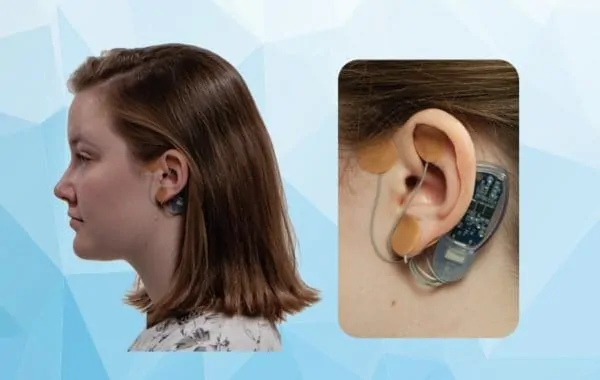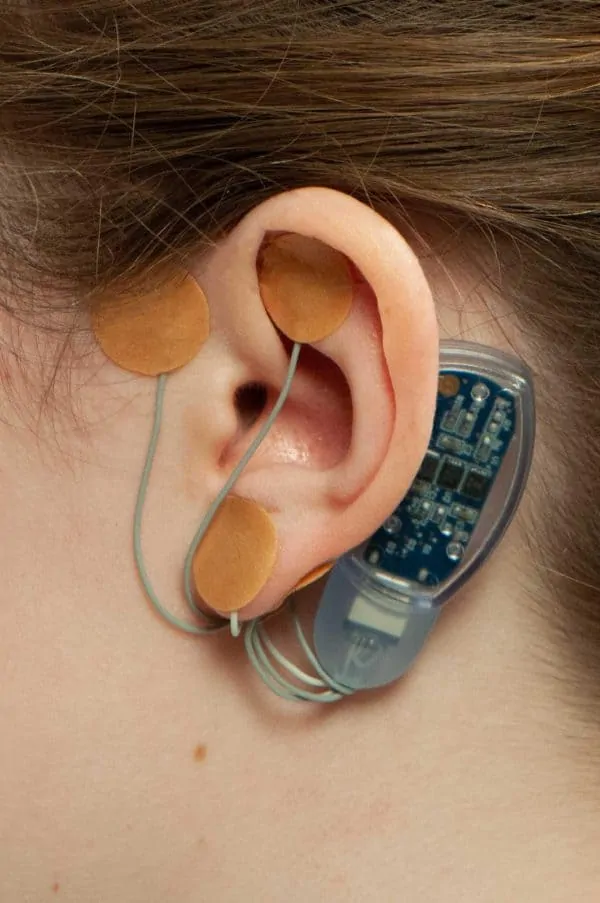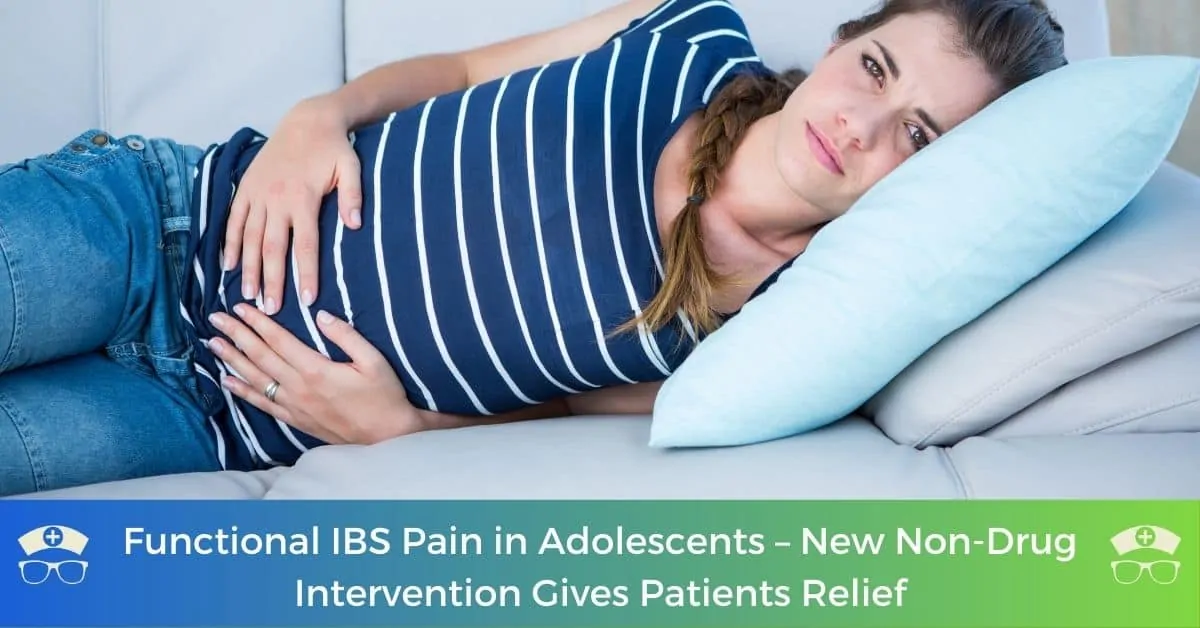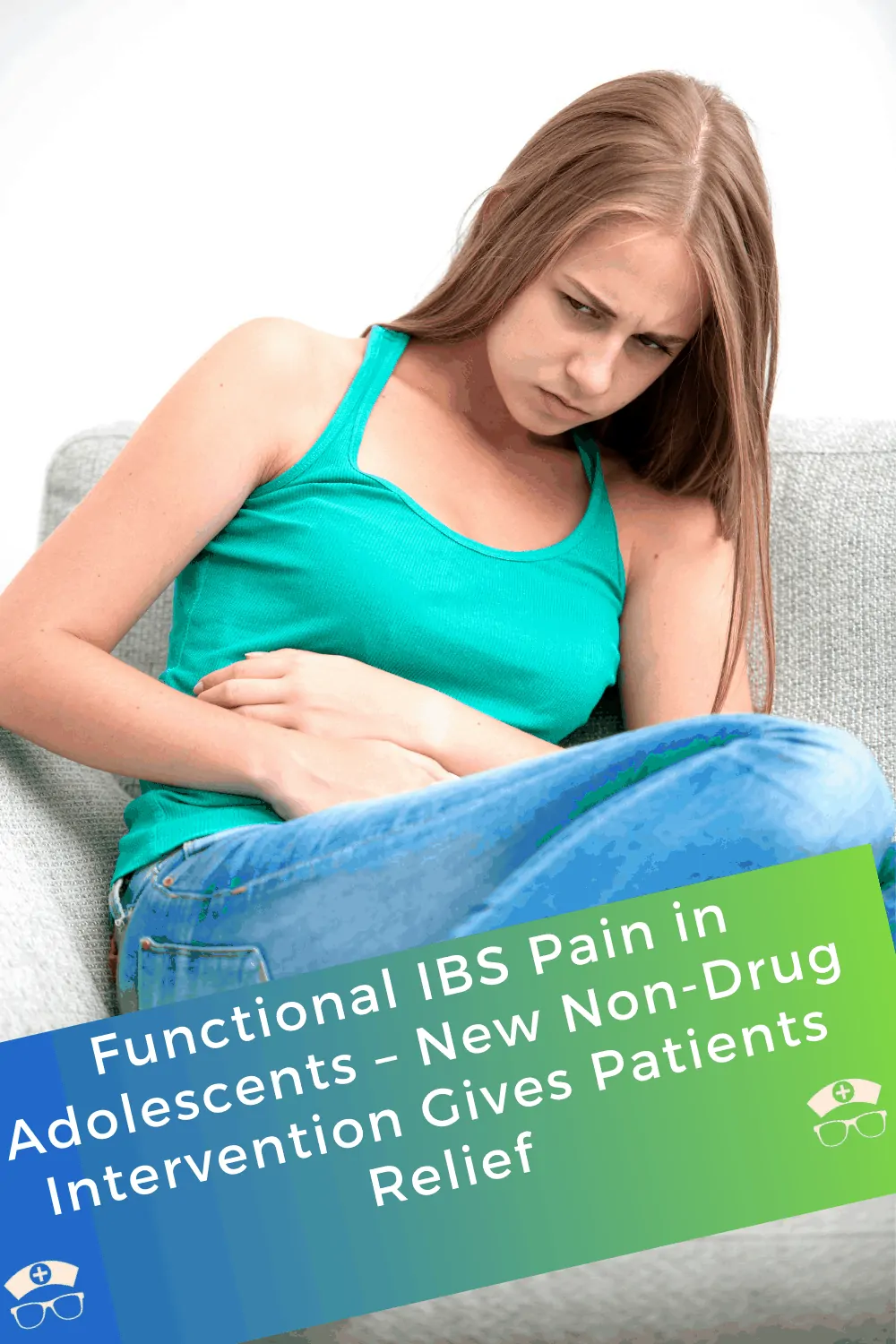Having a teen with irritable bowel syndrome (IBS) and functional abdominal pain (FAP) is no picnic. This devastating ailment can be difficult to diagnose, but even after diagnosis, treatment plans and interventions can be frustrating. While diet and lifestyle changes are always ideal and can be helpful to some, many teenagers have had to resort to drug therapies. Unfortunately, some of the most commonly used drugs in this age group have not been shown to be better than placebo in clinical trials.
In this article, we’ll dig into the difficulties surrounding adolescents (11-18yr old’s) suffering from FAP from IBS, information about IBS, and treatment options including an innovative new solution that is not drug-based.
- Feeling Helpless When Your Child is In Pain
- IBS Information for Parents and Healthcare Professionals
- Professional Disclaimer
- What is IBS?
- What Causes IBS and Functional IBS Pain?
- How is FAP in IBS Treated?
- How is IBS Pain Treated in Children?
- How is IBS Pain Treated in Teenagers?
- IB-STIM Treats IBS Pain in Adolescents (11-18 Year Olds)
- Does Insurance Cover the IB-STIM Device?
- Teens Experiencing FAP from IBS Can Get Relief
- Get More Information About IB-STIM
Feeling Helpless When Your Child is In Pain

There is nothing worse than having a child in pain that you cannot help. Some of the worst feelings I’ve ever encountered as a parent are when my child is hurting and there is nothing I can do to relieve the pain. I’ve been fortunate and the painful situations have been short-live and all related to routine developmental milestones such as teething and good-ole growing pains.
Unfortunately, some parents aren’t so lucky.
IBS Information for Parents and Healthcare Professionals
I write this as both a nurse and a mother. Although I typically write articles through a nurse’s lens assuming other nurses will read it as it relates to patients they care for, I can’t help but write to the moms and dads who have children who are suffering from pain. Many of you reading this are probably also nurses, but you’ll always be parents first.
If your child has IBS with pain, it can be devastating for the whole family. If you’re a nurse that is involved with the treatment of patients dealing with this issue, you’ve seen how debilitating it can be.
Professional Disclaimer
Before we proceed, I would like to offer a bit of a disclaimer. I am not a physician. You should always consult your child’s medical provider before making decisions that will impact their care. The resources in this article are for informational purposes only and do not constitute medical advice.
I have partnered with Innovative Health Solutions to share information about functional IBS pain in teenagers and an innovative treatment plan that does not involve medication. I’m really excited to do it because it’s technology, and we all know how nerds love their technology (especially this nerd).
What is IBS?
Irritable bowel syndrome (IBS) is a functional gastrointestinal disorder with unknown pathophysiology. For many, IBS causes pain that interferes with daily life and can even be debilitating for some. Management of IBS is difficult and it can be even more challenging for children and teenagers.
What Causes IBS and Functional IBS Pain?
IBS is a functional disorder that is believed to be caused when the brain and intestines (gut) are not communicating correctly. If there are abnormal processes between the brain and the gut (the brain-gut axis) it can result in functional gastrointestinal pain.
Historically IBS was often considered a psychological disorder. Often gut pain of unknown origin was generically called IBS. But in recent years, studies have identified that there are clear indications that the origin of IBS pain is neurological in nature and due to a malfunction in the brain.
Studies have shown that individuals who suffer from IBS have abnormal activation in the amygdala. The amygdala is the part of the brain that controls the autonomic nervous system (ANS) and is consequently involved in processing both fear and pain.
How is FAP in IBS Treated?
As with any medical issue, the least invasive treatment with the maximum impact on the quality of life is always preferred.
Diet and lifestyle changes are always the first approach when dealing with issues involving the gut. Ruling out any sensitivities to common allergies and irritants is important. The Mayo Clinic recommends managing mild to moderate IBS pain by managing stress and making diet and lifestyle changes including:
- Avoid foods that trigger your symptoms
- Eat high-fiber foods
- Drink plenty of fluids
- Exercise regularly
- Get enough sleep
How is IBS Pain Treated in Children?
Once these options have been exhausted, and all the tests have been completed, a functional issue is usually suspected. It is likely that several parts of the brain are not communicating properly when this occurs. One pathway may involve the amygdala, which is the part of the brain that processes fear, anxiety and pain. That’s why CBT (cognitive behavioral therapy), biofeedback and hypnosis have been used successfully in adolescents with IBS.
How is IBS Pain Treated in Teenagers?
According to a comprehensive review, the use of pharmacologic therapy (medications) is not supported for children and adolescents suffering from functional gastrointestinal disorders. Until recently changes in diet, lifestyle, antidepressants and other medications that affect the brain, along with CBT, biofeedback and hypnosis, were some of the only treatment options for youth suffering from IBS pain.
Since teenagers are going through rapid hormonal and psychological changes, having a treatment option that is not chemically based is a major innovation.
IB-STIM Treats IBS Pain in Adolescents (11-18 Year Olds)
A new breakthrough in IBS pain management for children has recently been made available. The IB-STIM is a revolutionary pain-management device that uses non-invasive electrical stimulation to positively impact central pain pathways. This enables 11-18-year-olds suffering from IBS pain to have a non-pharmacological intervention that can significantly reduce their pain and improve their quality of life.
The IB-Stim is a percutaneous electrical nerve field stimulator (PENFS) system intended to be used in patients 11-18 years of age with functional abdominal pain associated with irritable bowel syndrome (IBS). The IB-Stim is intended to be used for 120 hours per week up to 3 consecutive weeks, through application to branches of Cranial Nerves V, VII, IX and X, and the occipital nerves identified by transillumination, as an aid in the reduction of pain when combined with other therapies for IBS.
This new technology allows patients to receive a non-drug based IBS pain treatment as an option allowing them to possibly avoid potential side effects of medications historically prescribed to treat this condition.
As a technologically inclined nurse who is also interested in holistic healthcare, I am very excited about this innovation in IBS pain.
What is IB-STIM?

IB-STIM is a small electrical device placed on a patient’s ear for 5 days at a time for a cycle of three (3) weeks. It looks a bit like a hearing aid, but none of the components go in the patient’s ear. Instead, 4 small electrode arrays are placed in specific locations on and around the ear to send gentle pulses to the patient’s brain to reduce pain in patients with IBS.
IB-STIM is a new safe and effective way to address IBS functional pain in teens. For families interested in an option that may reduce the need for medicating their teen during a time when their brain chemicals and hormones are already in chaos, the IB-STIM is a promising innovation.
How Does IB-STIM Work?

IB-Stim is a percutaneous electrical nerve field stimulation (PENFS) device that is placed on the ear and sends signals through the cranial nerves. This is done by placing electrodes near neurovascular bundles of the patient’s ear and sending gentle electrical impulses to the brain.
In a previous study, the electrical impulses to the brain have been shown to decrease the activity of the amygdala, which impacts the pain felt by the patient. Although the exact mechanism of action has not been demonstrated, a pre-clinical study demonstrated a significant reduction in the activity of neurons in the amygdala just 15 minutes after the IB-STIM device was placed.
In short, the IB-STIM helps regulate the autonomic nervous system which reduces the pain experienced in the gut.
In fact, 81% of participants in a study using the IB-STIM device reported improvement in global symptoms. This improvement continued after the device was removed.
Who is a Candidate for IB-STIM?
IB-STIM is a non-drug therapy that can be used as an option for 11-18 years olds with functional pain associated with IBS. This option gives patients and providers choices that may reduce the use of medications, along with the risks and side effects associated with these medications. This, along with diet and lifestyle changes, CBT, biofeedback and/or hypnosis allow providers and patients to make other choices.
How to get IB-STIM
IB-STIM is typically prescribed and administered by pediatric gastroenterologists. Parents of patients seeking IB-STIM as a treatment for pain associated with IBS should start a discussion with their provider to determine if it is the right treatment option.
Who Shouldn’t Use IB-STIM?
Contraindications for the IB-Stim Stimulator include:
- Use of cardiac pacemakers because no clinical data is available
- Hemophilia
- Psoriasis vulgaris
A healthy, clean, intact skin surface is essential for the use of IB-Stim stimulator. So, if the patient has a condition that impacts the skin, the device may not be an appropriate solution.
RISKS
No safety data exists in adolescents with IBS treated longer than 4 weeks. Reported side-effects were similar between studied groups. There were no serious adverse events reported with active treatment. Overall, 10/104 (9.6%) of patients reported side-effects which included mild ear discomfort (n=6; three in the active stimulation group, three in the sham group), and adhesive allergy (n=3; one in the IB-Stim group, two in the sham group).
Does Insurance Cover the IB-STIM Device?
The level of coverage and rules for coverage of the IB-Stim device will depend on your specific insurance policy. The IB-Stim Guidance and Patient Support (GPS) team can help you and your healthcare provider understand your insurance coverage and financial assistance options. If you have questions regarding insurance or coverage for IB-Stim, work with your healthcare provider, and go to the Patient Tab on IBStim.com. The IB-Stim GPS team is committed to working with adolescents who have been diagnosed with FAP associated with IBS and will assist you as needed.
Teens Experiencing FAP from IBS Can Get Relief
I had the pleasure of speaking with Deanna Jones, a registered nurse who is the V.P. of National Training for Innovative Health Solutions, the company that invented the IB-STIM device.
She’s worked with teenagers suffering from functional IBS pain for years and has seen first hand just how devastating and debilitating this pain can be for these children. During a video conference, I watched her light up and she shared the journey of bringing this revolutionary device to market and told stories of children who received great relief once receiving treatment.
One pre-teen girl had significant health related issues and was not able to participate in normal activities. . After receiving treatment, she was able to play, laugh, and be a kid again.

I could see how much joy it brought Deanna to know that her work had positively impacted that little girl. As a nurse and mother myself, I got a little emotional. In fact, I got a little emotional again writing about it.
It made me proud to be a nurse and to know that nurses like Deanna were involved in bringing the IB-STIM to market.
Nurses impact patients’ lives every day in so many ways and it’s incredible to be able to give someone their quality of life back. Everyone deserves to enjoy and not just endure life.
Get More Information About IB-STIM
Information for Patients and Parents
Patients and family members who are interested in learning more about IB-STIM can visit IBSTIM.com. You can navigate to Patient > What to Expect and IB-STIM F.A.Q to find information to help you make an informed decision about this new therapy.
You should partner with your child’s pediatric gastroenterologist to discuss whether this treatment option is a good option for your child.
Information for Providers and Clinicians
For more clinical information, research, and additional details around using this device as a medical provider, visit the Provider section of IBSTIM.com. You can find information about how IB-STIM works, efficacy, sign up for training, safety, and more.



